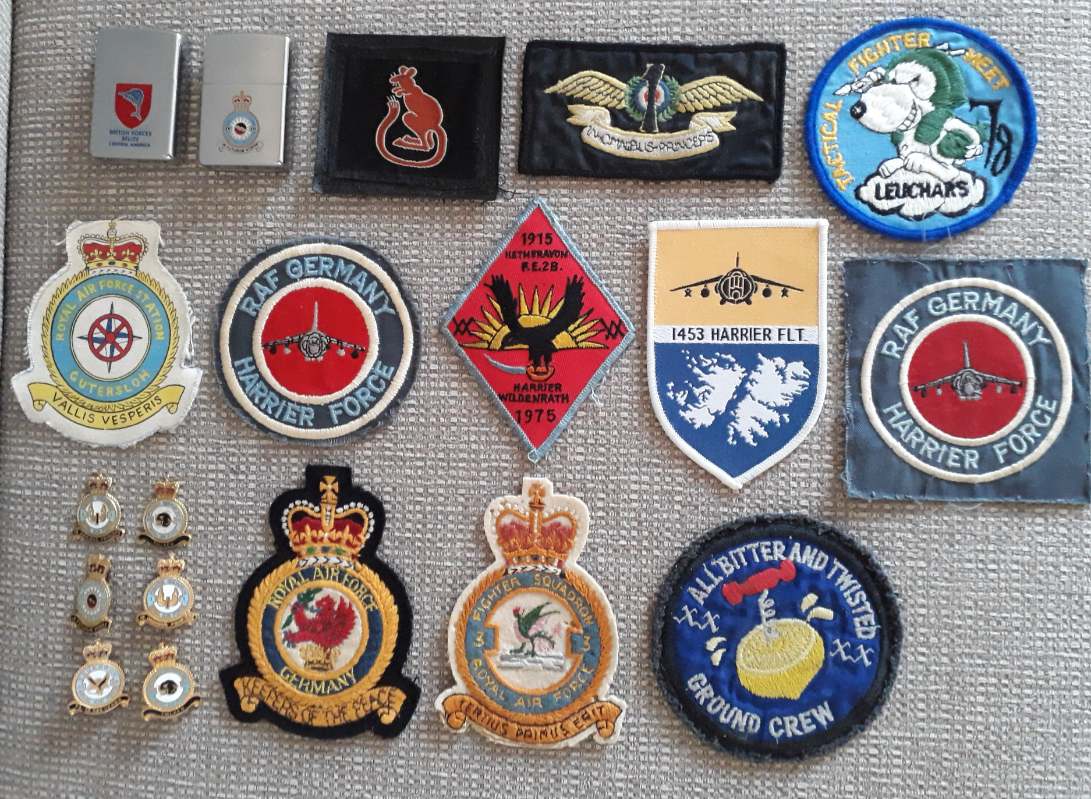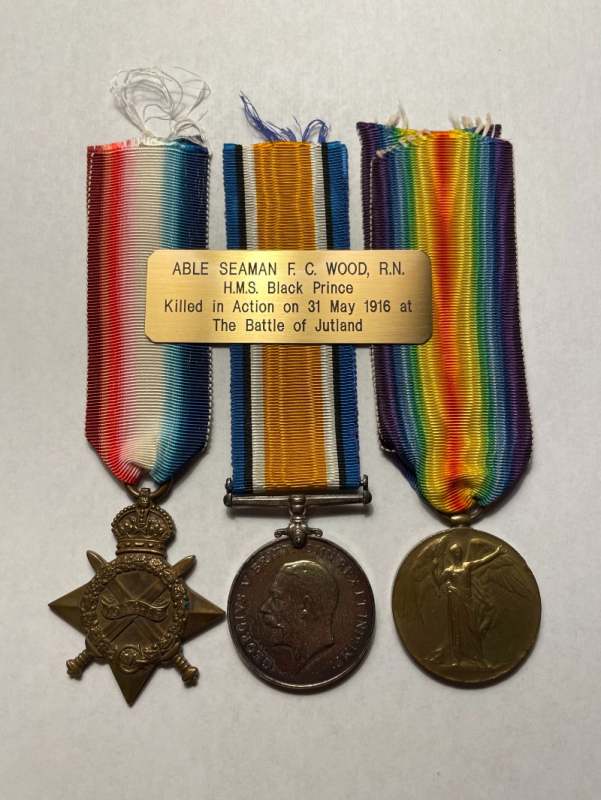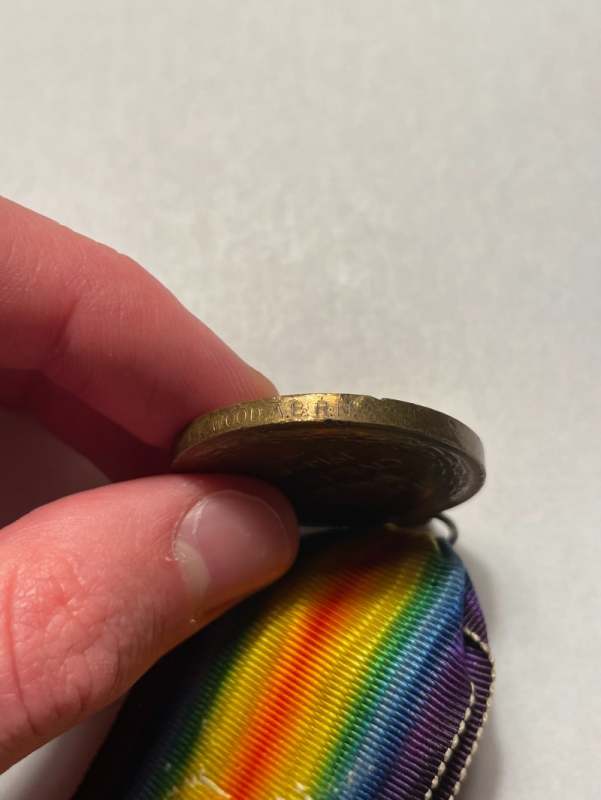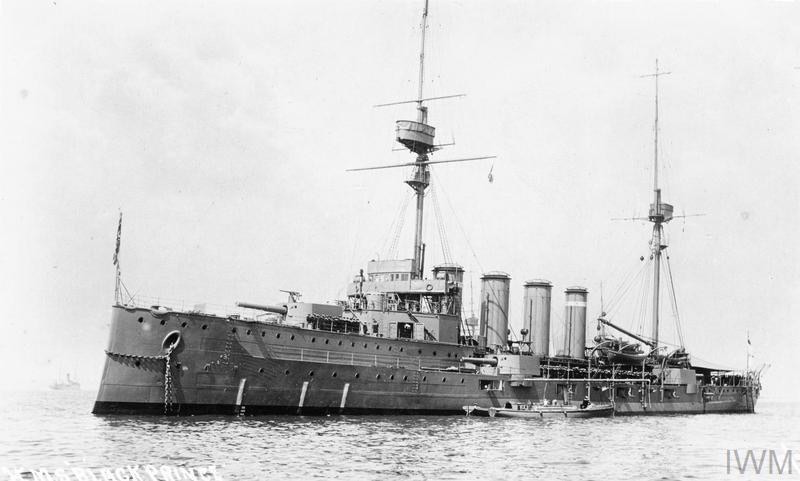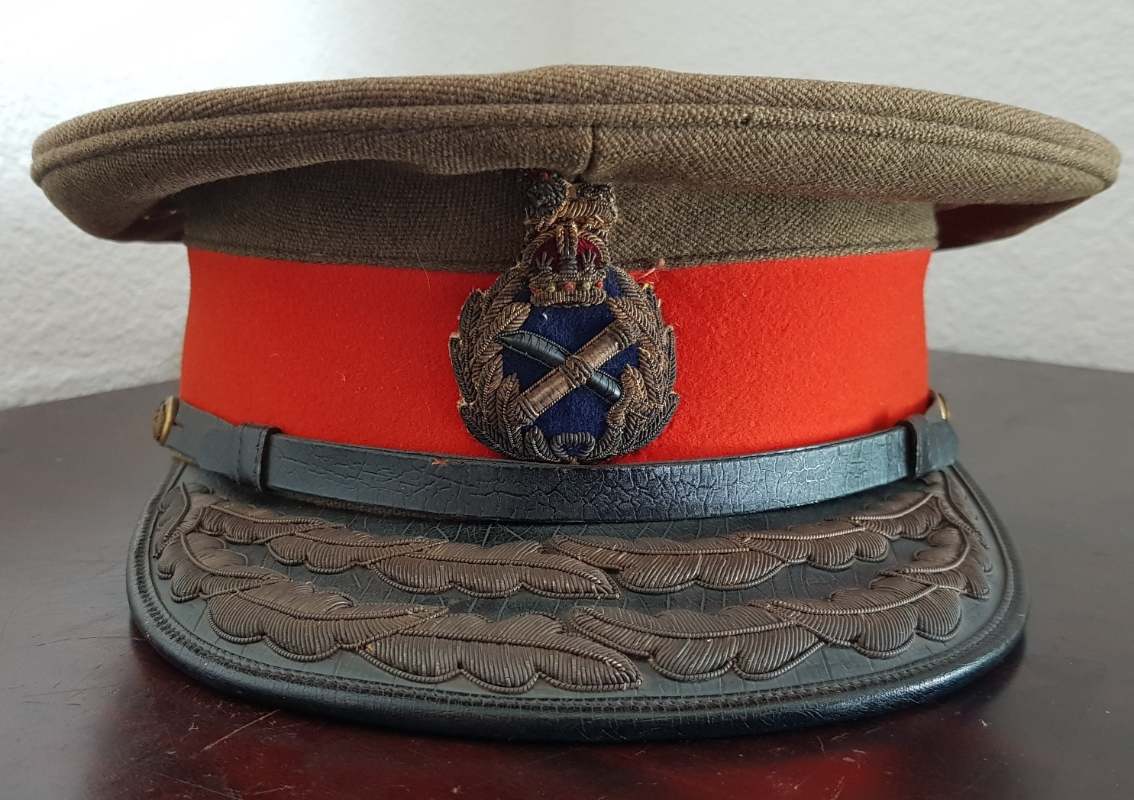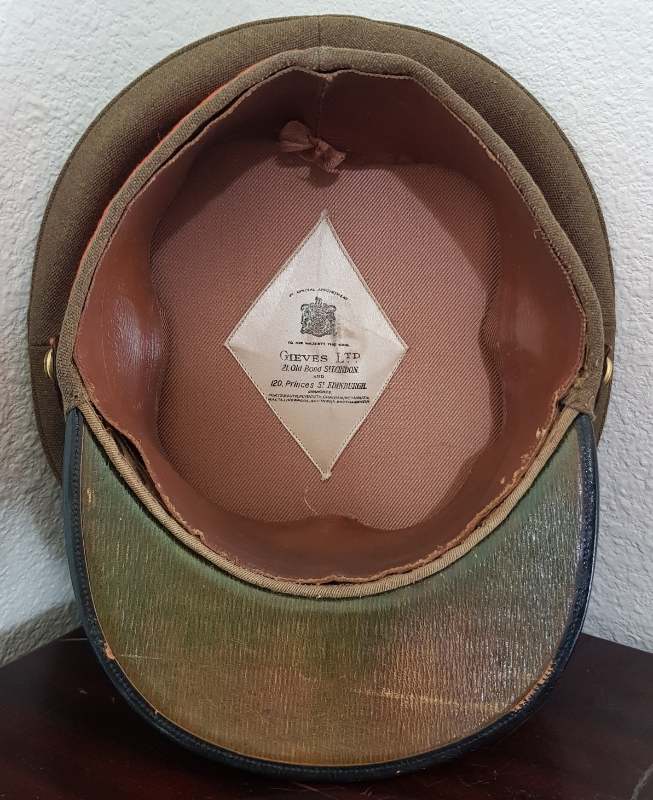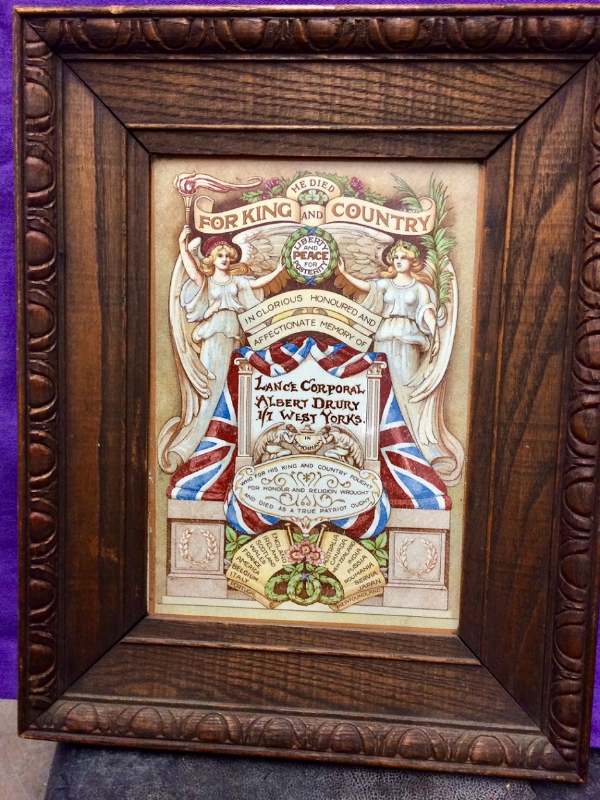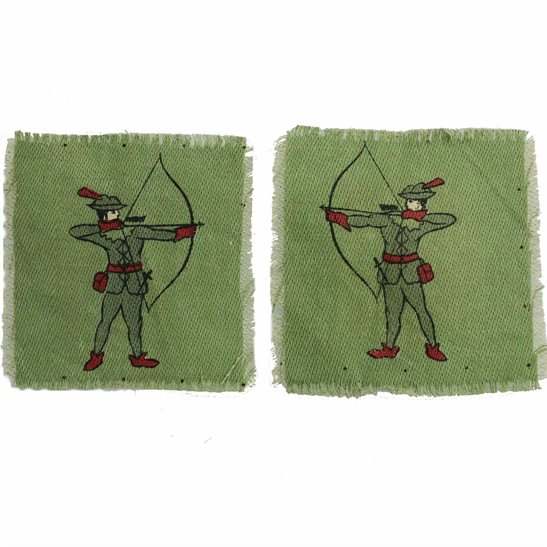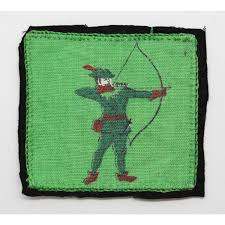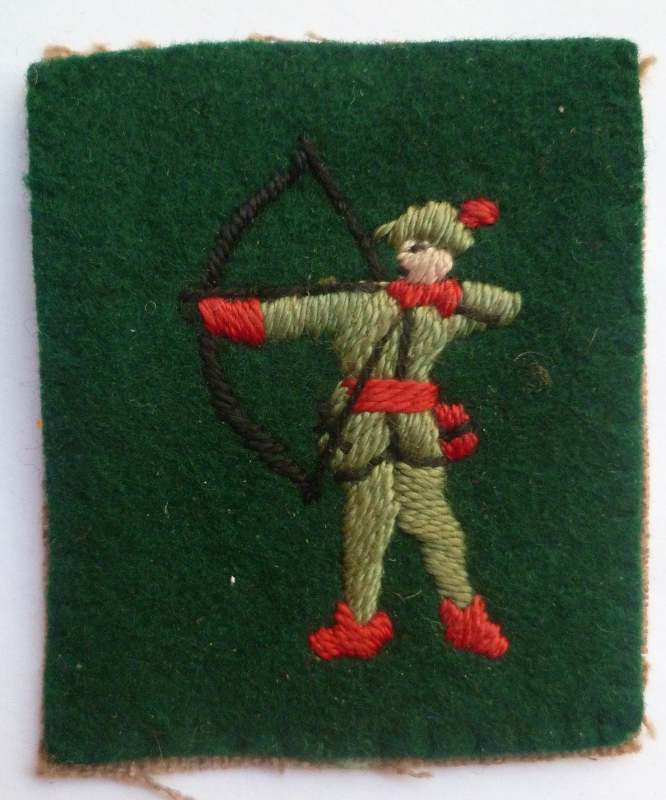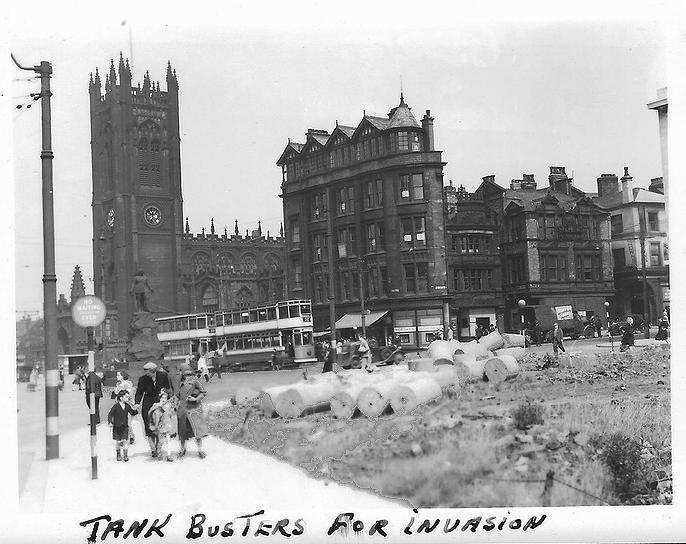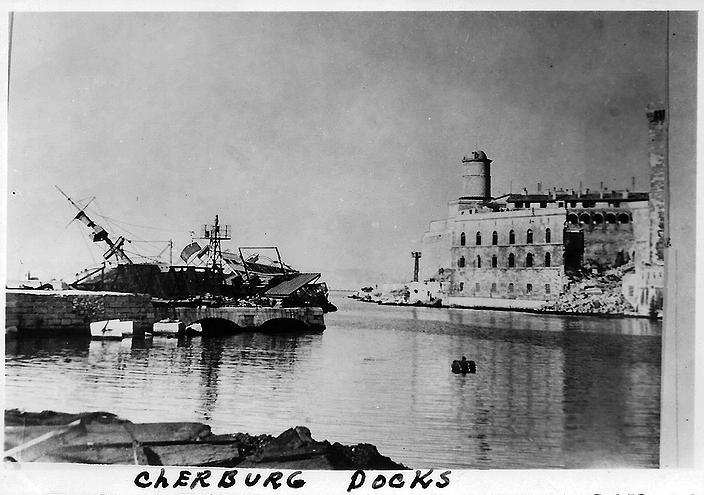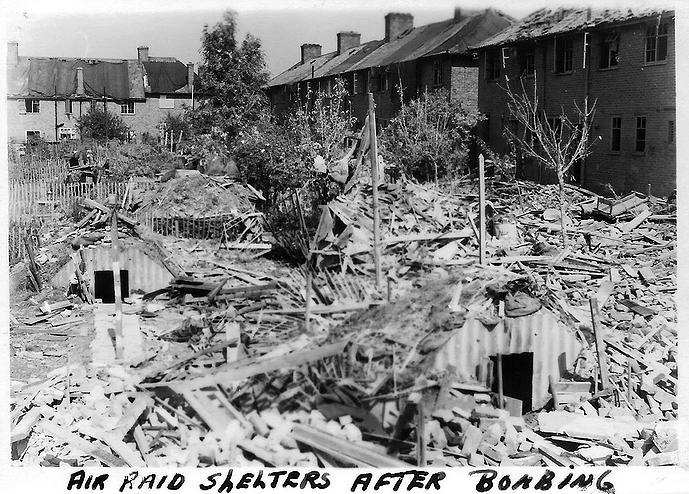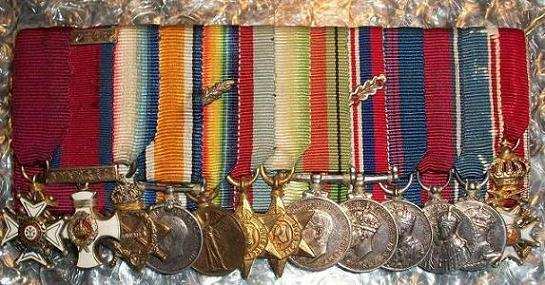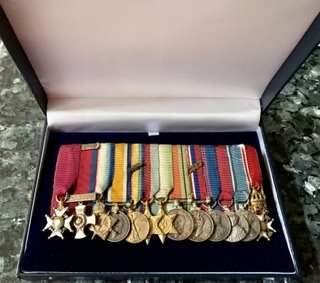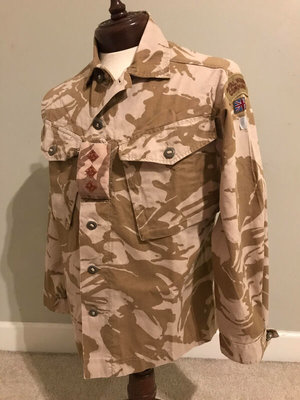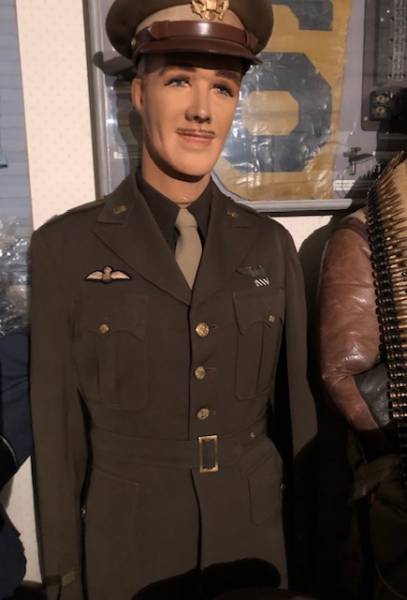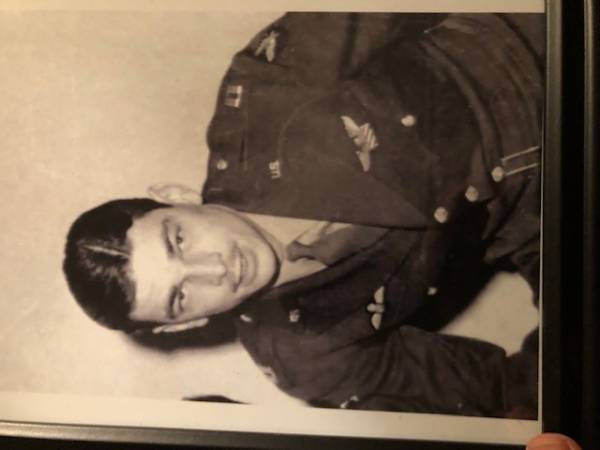Search the Community
Showing results for tags '20th Century'.
-
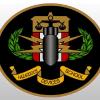
20th Century Land Forces Adriatic shoulder patch
Tonomachi posted a topic in Uniforms, Insignia, Equipment & Medals
I purchased this recently which is sort of a headquarters type unit for a variety of special operation forces during WW2. The symbolism has Pegasus (airborne forces) swimming (seaborne forces) in the ocean. On another forum (The British & Commonwealth Military Badge Forum) is a great description of this outfit which came out of the July 2015 edition of The Formation Sign Journal of the Military Heraldry Society: A DYING DUCK IN A THUNDERSTORM Formed in June 1944, LFA a planning and co-ordinating HQ ‘for trans-Adriatic special operations’ commanded all land and special raiding forces formerly part of Force 266, a Middle East offshoot of SOE formed as a result of the increased military commitment in the Adriatic. Based at Bari in Italy its primary task was to support the partisan forces of Marshal Tito in Bosnia and Montenegro. LFA was commanded by Brigadier GMO Davy, an officer of the 3rd Hussars, described by Donald Hamilton-Hill, an SOE officer serving with LFA as a man with ‘a penchant for publicity and ideas of desert leap-frogging in operations’. The white horse of Hannover within a blue garter taken from the officers’ cap badge of the 3rd Hussars were incorporated in the new formation’s badge, but as LFA operated across the Ionian and Adriatic seas, ‘carried sometimes by air but more often by sea’ the white horse was given wings to represent a swimming Pegasus climbing onto dry land. Drawn in watercolours by Brigadier Davy, a local Italian cloth maker produced ‘a somewhat inadequate stencil’ from which a two inch square was cut. Comments from other formations were not complimentary; ‘What the hell’s that on your shoulder? A dying duck in a thunderstorm?’ or ‘That duck was badly shot – where’s the Labrador?’. A 6th September message from HQ LFA noted that ‘a formation flash [sic] will be taken into use forthwith by all units under command’ - three pairs for officers, one pair for ORs - its distribution list recording LFA’s units: HQ Vis Brigade, HQ, Raiding Support Regiment, HQ, LRDG (A&B Squadrons) HQ, Special Boat Section, LRDG Signal Squadron plus C Coy, 2nd HLI and Rear HQs, 111 Field, 31 LAA and 64 HAA Regiments, RA and 579 A Field Coy RE. Interestingly 2nd Special Service Brigade, also under command was not to wear the sign. C Coy, 2 HLI wanted nine pairs for officers, 35pairs for ORS, the SBS 165 badges, as ‘this represents the requirements of those members of the unit at present in CMF’. Distributed on 16th September officers were to wear them on the arms two inches from the shoulder ‘attached to the shirt preferably by press buttons’, ORs ‘fastened to the shoulder straps by a piece of tape fastened to each side and looped underneath’… ‘the means of easy attachment and detachment is necessary as the flashes will not wash satisfactorily’. -
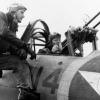
20th Century My 1970s RAF Harrier patch collection
Flightpath posted a topic in Uniforms, Insignia, Equipment & Medals
Hi, part of my military and collecting interest has been RAF and USMC Harrier stuff for many years, here is a selection of some of my 1970s RAF patches, some of these are extremely HTF, the winged 1 Squadron patch, the Snoopy 1978 Tactical Fighter Meet, the 20 Squadron All bitter & twisted and the 1453 Harrier flight (Falkland Islands) are very rare. The two Zippos, one had the 4 Squadron crest and on the other side HARRIER FORCE RAF GERMANY below the Queens 1977 Silver Jubilee crest. The other Zippo Has the crest of the British Forces Belize, Central America and the crest with a sailfish. I hope you enjoy these.... cheers, John -
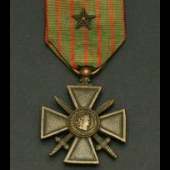
20th Century American Volunteer In The RFC Grouping
Croix de Guerre posted a topic in Uniforms, Insignia, Equipment & Medals
This is a sample of a grouping I own identified to an American named George F Thomson who served with 74 Squadron. The cuff-rank tunic was the uniform he was wearing when he was shot down and captured June 12, 1918. -
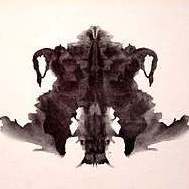
20th Century MkVI Helmet - desert dpm + glint tape
Pinkgoatsarmy posted a topic in Uniforms, Insignia, Equipment & Medals
Ciao, I would like to show you my first MK6 helmet, i was looking for it since many years and finally i found my dream one for a good price. Shell is a early production smooth-finish of 1984 form National Plastic name and service number of first owner. Cover is a desert dpm of a early '90 contract with name/service number/ blood type and 6 square of glint tape in side/back and top. I think this helmet can be isert in Operation Granby (Gulf War) time frame. I have 2 question: - do you know if is possibile to identify the unit by service number? - this huge use of glint tape is a common procedure or can be connected ti some specific branch? RAF/Navy for visibility - Para or commando for fast identification Thanks -
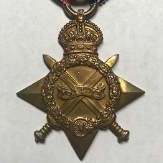
20th Century HMS Black Prince KIA Trio - Battle of Jutland
Trevor Arendall posted a topic in Uniforms, Insignia, Equipment & Medals
The Battle of Jutland is the most famous sea battles of World War One and perhaps one of the most famous battles of the whole war. However, for many years after the battle there was a great mystery. It was that of what truly happened to HMS Black Prince. For a long time the HMS Black Prince was assumed to be sunk by a German Submarine because the last wireless signal to the British fleet from the Black Prince was a report of a submarine sighting at about 20:45. However, historians now hold the German account of the ships sinking. During the night action of the battle the HMS Black Prince was separated from the HMS Defence, HMS Warrior, and HMS Duke of Edinburgh. While searching for her sister ships she ran into the entire German battle line and tired to turn away but it was too late. The German battleship Thürungen fixed her search lights on the Black Prince and opened fire. Many other German warships opened fire, these included the Nassau, Ostfiesland, and Friedrich de Grosse. The Black Prince returned fire but was ineffective. Most of these German warships were between 750 and 1500 yards away from the Black Prince which is effectively point-black range for naval gunnery of the time. The HMS Black Prince was hit by at least 20 large caliber shells and she sank within 15 minutes. She went down with all hands, all 857 men who sailed her were killed. During the battle the HMS Spitfire reported seeing a ship that was “a mass of fire from foremast to mainmast, on deck and between decks. Flames were issuing out of her from every corner.” this mystery ship blew up at about midnight. It is thought that the warship the Spitfire saw was the HMS Black Prince. In my opinion, this is an accurate assumption as the Black Prince was the only ship sunk at midnight during the Battle of Jutland. Here is the medal group to one of the 857 men who lost their lives while serving aboard the HMS Black Prince. Frederick Charles Wood was only 21 years old when he was killed. His medal entitlement was issued to his mother. -

20th Century WWII British Army General Officers Cap, made by Gieves
austin_militaria posted a topic in Uniforms, Insignia, Equipment & Medals
This was a strange pickup at a local flea market last weekend. Nothing else military and the owner had no history of it. Unfortunately it is not named. Is there a specific pattern date to this style hat? -
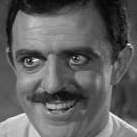
20th Century UK Civil Defense Beret
Boy Howdy posted a topic in Uniforms, Insignia, Equipment & Medals
-
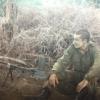
20th Century 11 (East African) Division 1944 Badges
Kia kaha posted a topic in Uniforms, Insignia, Equipment & Medals
Painted pair worn by a Rhodesian Officer in the Northern Rhodesia Regiment. and his Number One dress badge which has been embroidered over the printed Rhino in navy blue cotton sewn into a disk with a brooch pin attachment. -
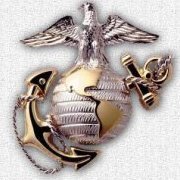
20th Century WWII Loyal Regiment named officer's uniform-Burma vet
mndoss posted a topic in Uniforms, Insignia, Equipment & Medals
I recently purchased this WWII uniform belonging to Capt C.R. Arthur, Esq who served with the Loyal Regiment in Burma. Both the jacket and the trousers are named to him. Both are also dated 15 Aug 1941. The uniform is in absolutely fantastic shape with only a few minor nicks here and there. I've been trying to get a better ID on Capt Arthur, at the least a full name for him. So far I've had no luck so if anyone could provide any assistance on some additional information on him it would be greatly appreciated. Since he served in Burma I'm assuming he was with either the 5th or 6th Territorial Battalions. From what I've been able to find those were the only two battalions in the Loyal Regiment to serve in Burma. The 5th Battalion apparently surrendered to the Japanese in Singapore in early 1942 and spent the rest of the war as POWs. It would be interesting to see if he was with them. The 6th Battalion served in India in operation against the Japanese and then in the Burma campaign in 1944 to the end of the war. All I need to complete the uniform now is a cap and shirt (I've already got a spare tie). I know it's a slim chance but if anyone has an officer's visor cap with Loyal Regiment cap badge they'd be willing to sell please let me know! Even if you have a bare cap with no badges that would work too. -
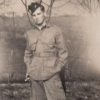
20th Century Royal Airforce Greatcoat
I Hate Moths posted a topic in Uniforms, Insignia, Equipment & Medals
I bought this RAF greatcoat right out of England about 20 years ago. It cost 9 dollars on eBay and 50 to ship to US. I realized early on that the chevrons were up side down. Is there any reason that would have been done? Can someone please help with dating, and advice on what to do about the chevrons -
 Hello Gentlemen, I 'think' I may already know the answer to this query, but I always prefer to confirm via someone a bit more versed in the subject than myself. It is in reference to the my recent Query regarding 1st Lieutenant [ Later Captain ] Albert O. RAYMOND, M.C. formerly of the RAMC & later U.S. Army's Medical Corps. I've determined that he was awarded the BWM, but IIRC, his example would have been issued unnamed ? I seem to recall reading this somewhere along the way during my years of collecting. Although I have 'an idea' that this may be the case, I am not absolutely certain about it. Could anyone please advise on this issue ? As always, any & all replies will be most deeply appreciated. THANK YOU !! Dom P. / dpast32@aol.com
Hello Gentlemen, I 'think' I may already know the answer to this query, but I always prefer to confirm via someone a bit more versed in the subject than myself. It is in reference to the my recent Query regarding 1st Lieutenant [ Later Captain ] Albert O. RAYMOND, M.C. formerly of the RAMC & later U.S. Army's Medical Corps. I've determined that he was awarded the BWM, but IIRC, his example would have been issued unnamed ? I seem to recall reading this somewhere along the way during my years of collecting. Although I have 'an idea' that this may be the case, I am not absolutely certain about it. Could anyone please advise on this issue ? As always, any & all replies will be most deeply appreciated. THANK YOU !! Dom P. / dpast32@aol.com -
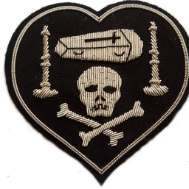
20th Century World War I Ceramic Memorial Plaque
Bruce Linz posted a topic in Uniforms, Insignia, Equipment & Medals
Hello, I am hoping to get some information on this World War I Ceramic Memorial Plaque. I am familiar with the Death Penny, but have never seen one of these plaques before. I see from the back stamps that it was made by the Royal Household Company. That company calls this "The Century Memorial Tablet". It is named to Lance Corporal Albert Drury, 1/7 West Yorks. I confirmed that this was Killed in Action on 03 September 1916. I have included three photos. I am also interested in its value. Thank you for your help. Semper Fi, Bruce Linz -
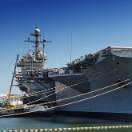
20th Century British jungle jacket with unit flashes
ussjfkcv67 posted a topic in Uniforms, Insignia, Equipment & Medals
Here is one of several British Jungle jackets / shirts I have in my collection. Any information on the formation signs / flash would be helpful along with the time period it was used. Thanks -
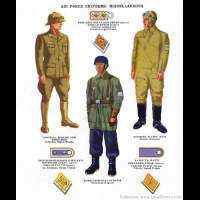
20th Century Robin Hood Formation Signs Patches
patches posted a topic in Uniforms, Insignia, Equipment & Medals
Was reminded of the Formation Sign for the North Midland District by member Gunslinger in his topic on Formation Signs in this Forum, a patch I seen in that 1970s Rosignoli book on Post WWII Insignia of the world, a patch I always thought was cool, and looked around for images of it and found these variants of it, Print, Embroidered etc, so here they are for your viewing pleasure. -

20th Century 1914-15 Star Medal to George E. Orton, Coldstream Guards
77th Inf. Div. posted a topic in Uniforms, Insignia, Equipment & Medals
Hello, I picked this medal up locally this weekend, but cannot decipher the engraving on the medal which reads to me as "12883 LCpl B. E. Orton C. 8 DS:" . Thanks in advance for any help with this. 77th. Inf. Div. -

20th Century How did these London tank busters work?
Vincennes posted a topic in Uniforms, Insignia, Equipment & Medals
Here are 3 photos of England I got in a collection of 50 from a US soldier stationed at an American Air Base in England in WW2. The "tank busters" in one photo are interesting. How did they work? Paul -
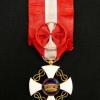
20th Century Attributed Miniature Medal Bar
Jumpmaster posted a topic in Uniforms, Insignia, Equipment & Medals
Hello all, hoping everyone is well and families well too. I just received a replacement case for my only British mini set and felt motivated to post and solicit any of your favorite attributed mini medal bars. Thanks for indulging me. Admiral Sir William Jock Whitworth (1884-1973): KCB - Birthday Honours, 1941 DSO - 1918 MiD - Great War MiD - Birthday Honours, 1940 Grand Cross, Order of St. Olav - London Gazette 13-1-1948 -
 Hello all! First time poster here! I've had this uniform in my collection for awhile now and I've just recently started to try and ID who it might have belonged too. As you can see the Sqn Ldr received the DSO and DFC and served in Europe, North Africa, and Burma. They were MiD and having the Air Efficiency Medal also means they were in the Volunteer Reserve if I'm not mistaken. I figured a DSO and DFC recipient who served in all of those theaters shouldn't be terribly difficult to pin down an ID For but I've had no luck. I've searched on the Traces of War and World War II Unit Histories & Officers sites and found a few possible matches but nothing 100%. If anyone here could assist with pinning down an ID it would be greatly appreciated!
Hello all! First time poster here! I've had this uniform in my collection for awhile now and I've just recently started to try and ID who it might have belonged too. As you can see the Sqn Ldr received the DSO and DFC and served in Europe, North Africa, and Burma. They were MiD and having the Air Efficiency Medal also means they were in the Volunteer Reserve if I'm not mistaken. I figured a DSO and DFC recipient who served in all of those theaters shouldn't be terribly difficult to pin down an ID For but I've had no luck. I've searched on the Traces of War and World War II Unit Histories & Officers sites and found a few possible matches but nothing 100%. If anyone here could assist with pinning down an ID it would be greatly appreciated! -

20th Century How to I.D. WW1 British Cap Badges
dpast32 posted a topic in Uniforms, Insignia, Equipment & Medals
Hello Guys, It's been a really long time since I've dealt with WW1 era British Cap Badges, & could truly use a bit of advice as to determine an early war example, as opposed to a late war version. Such as in; Why are some silver colored, with brass attaching 'slider' on the reverse, OR an example that's all brass construction ? ANY comments & or advice will be very much appreciated. THANKS dpast32 -
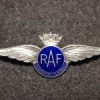
20th Century RAF Transport Command Wings & Cap Badge - Elegance
mtnman posted a topic in Uniforms, Insignia, Equipment & Medals
The RAF Transport Command has long been a very interesting aspect of militaria collecting for me but it is very difficult and few and far between are found, the Sterling insignia of the transport command. I have been searching for several years now, for an example of Transport Command wing insignia by Murphy of Montreal Canada. As you will see, the gentle undulations of the wings accentuated by the "exclamation point" flare up of the wing tips from the trough of the dip on each wing, as well as the rich royal blue perfection of the enamel placement with pinpoint precision incorporation of silver lettering within the enamel,has generated some of the most some of the most beautiful and as I mentioned in the title, elegant, insignia of World War II. The cap badge with its balanced intricacies, is a shock to the aesthetic, just breathtaking and complex design, with the incorporation of silver as a throne for the Royal Blue yet again. There is the subtle reservation of consummate skill as well as the glory of that skill unveiled in balanced, centered, circular elegance. A little history of the transport command from the beginning. the transport command started as a group of civilian pilots from the US, Canada and Great Britain. Some very delicate handling of getting the aircraft from us factories to Canada had to be organized, including having horses pull early aircraft across the Canadian border after being flown from the US aircraft production factories to the border, was employed to get around US neutrality laws. FDR made sure any Authority from the US government looked the other way. The name given to the organization was first the Canadian Pacific railway aircraft facilities, then the Atlantic ferrying organization or ATFERO, then the RAF Ferry Command, and finally when the transportation of aircraft became worldwide by 1943, the organization became the transport command with the Atlantic route being designated the Air Transport Group 45. The practice of ferrying aircraft from US manufacturers to the UK was begun by the Ministry of Aircraft Production. Its minister, Lord Beaverbrook, a Canadian by origin, reached an agreement with Sir Edward Beatty, a friend and chairman of the Canadian Pacific Railway Company, to provide ground facilities and support. MAP would provide civilian crews and management. Former RAF officer Don Bennett, a specialist in long distance flying and later Air Vice Marshal and commander of the Pathfinder force, led the first delivery flight in November 1940.[1] In 1941, MAP took the operation off CPR to put the whole operation under the Atlantic Ferry Organization ("Atfero") which was set up by Morris W. Wilson, a banker in Montreal. Wilson hired civilian pilots to fly the aircraft to the UK. The pilots were then ferried back. "Atfero hired the pilots, planned the routes, selected the airports [and] set up weather and radiocommunication stations."[2][3] Aircraft were first transported to Dorval Airport near Montreal, and then flown to RCAF Station Gander in Newfoundland for the trans-Atlantic flight.[1] The organization was passed to Air Ministry administration though retaining civilian pilots, some of which were Americans, alongside RAF pilots, navigators [4]and British radio operators. The crews were briefed by local meteorologists including R. E. Munn. After completing delivery, crews were flown back to Canada for the next run.[5] Ferry Command was formed on 20 July 1941, by the raising of the RAF Atlantic Ferry Service to Command status.[6] Its commander for its whole existence was Air Chief Marshal Sir Frederick Bowhill.[6] As its name suggests, the main function of Ferry Command was the ferrying of new aircraft from factory to operational unit.[7] Ferry Command did this over only one area of the world, rather than the more general routes that Transport Command later developed. The Command's operational area was the north Atlantic, and its responsibility was to bring the larger aircraft that had the range to do the trip over the ocean from American and Canadian factories to the RAF home Commands.[7] This was pioneering work: before Ferry Command, only about a hundred aircraft had attempted a North Atlantic crossing in good weather, and only about half had made it. Over the course of the war, more than 9,000 aircraft were ferried across the ocean and, by the end of the war, crossing the Atlantic had become a routine operation, presaging the inauguration of scheduled commercial air transport services after the war.[1] Ferry Command was subsumed into the new Transport Command on 25 March 1943 by being reduced to Group status as No 45 (Atlantic Ferry) Group.[6] No. 45 Group still retained responsibility for Atlantic aircraft ferrying operations, but Transport Command was a worldwide formation, rather than a single-mission command. Bowhill became the first commander of Transport Command.[ -
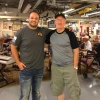
20th Century Royal Marine gear - GWOT
POFmilitaria posted a topic in Uniforms, Insignia, Equipment & Medals
Group of items used by the Royal Marines in the GWOT. Uniform, modified boonie, T-shirt, and magazine pouch. Jacob -

20th Century SAS Insignia Groupings Many Are Bidding On - IMO All Copies
Tonomachi posted a topic in Uniforms, Insignia, Equipment & Medals
I stumbled upon these three different listings on eBay from the same seller in the UK which a bunch of people have already bid on. In my opinion none of this stuff which is advertised as WW2 are genuine period pieces but copies. The first grouping is a number of SAS wings with 29 bids currently at $680.68. All of these wings to include the two shoulder tabs are in my opinion copies (see link). https://www.ebay.com/itm/Ww2-Rare-collection-of-SAS-special-air-service-qualification-wings-patches/202859392609?hash=item2f3b5cae61:g:5DwAAOSwwJ5d~S~x -

20th Century Malaya Section Force 136 beret badge
Tonomachi posted a topic in Uniforms, Insignia, Equipment & Medals
I was wondering if anyone knows if the beret badges pictured below are originals or copies. If you collect WW2 era British Special Forces insignia a very important reference is an out of print 1984 book by Len Whittaker titled, "Some talk of private armies". Unfortunately the color plates in this book only show the fronts of original insignia not the backs. These beret badges are cast just like the original badges were cast so it would be easy to make a cast copy from an original badge. So unless you had a documented original badge in hand you wouldn't be able to make a comparison using measurements as a guide as anything cast is always slightly smaller due to shrinkage. This beret badge has for years has been erroneously known as the insignia for the Malayan People's Anti-Japanese Army (MPAJA). The scroll of this badge has the word Malaya in Chinese, English and Malay due to the make up of this group being Anglo, Chinese, Chinese Canadians, Malays, and Indians. The MPAJA being harden communist refused to wear this badge of the imperialists but they needed the funding and weapons supplied to them by the Allied Forces. However instead of using these resources to really fight the Japanese the bulk of these weapons and gold they received were squirreled away for the upcoming fight against British Colonialism post war referred to as the Malayan Emergency between 1948 through 1960. This badge is actually a Malay Section, Group B, Force 136 headgear insignia. Force 136 was a cover name for the British SOE (Special Operations Executive) operating in what we refer to as the China Burma India Theater of Operations. Force 136 was responsible for clandestine military action against the Japanese in Malaya. The beret badge was worn by members of Force 136 and other non-communist guerrilla groups with no affiliation with the MPAJA. Many years ago at a large west coast gun show I saw one of these badges for sale that was identified to an US OSS person and could kick myself for not recording the name. I couldn't afford what they were asking but this supposedly proved that there were a few Americans representing the OSS in Malaya with Force 136. -

20th Century A Real Glider Pilot Regiment Beret Badge
Tonomachi posted a topic in Uniforms, Insignia, Equipment & Medals
I finally found an original post war but early (King's Crown) British Glider Pilot Regiment beret badge that just so happen to match the collar pieces I've had in my collection for awhile. The previous beret pieces I had in my collection turned out to be copies. The way to tell the real stuff from the bad stuff is by looking at the number of rows of feathering in the thigh of the eagle. The original badges will only have a row of three while the copies have a row of five to six. Original -
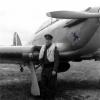
20th Century RAF - 121 Eagle Squadron
Scarecrow posted a topic in Uniforms, Insignia, Equipment & Medals
US service jacket that belonged to Reade Tilley. Reade was from Clearwater Fl, he joined the RCAF in June of 1940, arrived in the UK in April 1941 where he joined 121 Eagle Squadron in May. He was posted to 601 Squadron in April 1942 where he was one of the daring pilots that flew a Spitfire off the deck of the USS WASP to reinforce Malta. When in Malta he was posted to 126 Squadron. Reade became a 7 victory Ace while flying with the RAF in Malta, earning the British DFC which was presented to him at Buckingham Palace in October 1942. Also in October Reade transferred to the USAAF where he was assigned to 8th AF Headquarters. In the photo attached of Reade he is wearing what I believe to be this service jacket.


